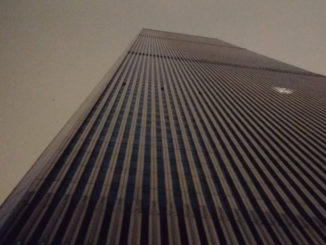No, it’s not about trains, in fact there are no railways on Jersey, the horror!

Being a pureblood, many holiday destinations (USA, Spain, Cruises) are out of the question at the moment. Not that big a deal really, I’m happy to give those a miss for a year or two. One place we’d never been to was Jersey. With a direct flight from the local (fully functioning) airport, to what is officially a domestic destination means no testing, and few formalities. The addition of the chance to visit a friend, who had move there a few months ago, meant it was one to try.
This was to be a different trip to previous summer holidays – in fact the first one in 23 years that was longer than a weekend and did not include the kids. Now they’re old enough to go on their own holidays, why should we have to drag them to places and pay for the privilege?
This was a holiday booked only a month before departure – a quick scan via booking.com showed a number of hotels with availability with prices varying from £300 to £3k for two for the week.
For travel there were some options involving flying through Heathrow or Southampton but big Brucey bonus, found Jet2 were doing direct flights from Newcastle. Even better, they had holidays using the hotel we wanted – cheaper to get it as a package through them (giving free transfers, ATOL protection etc.) than to book individually.
We went for a good quality hotel in the centre of St. Helier – the Pomme D’Or, a hotel steeped in history right on the waterfront in Liberation Square – around £2,300 for hotel, flights and transfers in an upgraded room for two. That’s around a third of the cost of the previously planned cruise.
The trip over was uneventful, no tests, no covid certificates, no huge queues, as it is an internal flight of around 70 minutes with a very civilised 2pm departure time. Interestingly Jet2 had failed to upsell the legroom seats near the emergency exits, so had to draft people in to sit in them to cover the exit – so we both got a row each of lovely legroom in what was otherwise a full flight.
Jersey is laid back. Nobody is in a rush and that is particularly evident in bus drivers and baggage staff. They will have had a rush of three or four flights to deal with, needing to turn them around quickly. Just like everywhere else on the island, there is a huge shortage of labour as those who’d been on the island on the past went home for covid and haven’t returned. In the end the bags took around an hour to appear, about the same duration as the flight itself.
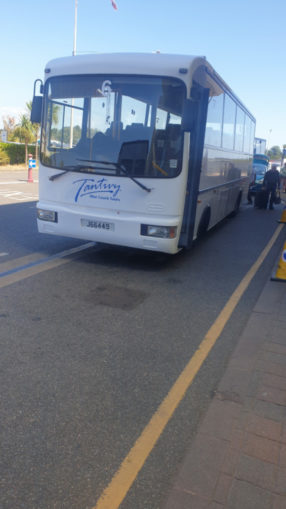
Transfer buses – well none of the fancy air-conditioned cruisers of Majorca or main resorts, but a batch of old blue service buses, the air con being the driver opening the door when stopped at lights. The island itself is small enough that any transfer would be maximum of half an hour, so bearable.
The Pomme D’Or Hotel is historic – built over 180 years ago. It has seen some transformations and grew over the years – many historic photos in the bar and reception show tourists in the 20’s – one looking suspiciously like JWP. During the war, the central location near the harbour meant it was an obvious candidate to be used as the headquarters of the Germany Navy in the area during occupation. At the end of the war it required almost a complete rebuild, most of the internal fixings having been burned for warmth. The rooms are small but were fortunately air conditioned and recently refurbished with all you need. Breakfast overlooking the square was an extensive buffet and evening meals were available – it is the hotel used by consultants and government contractors as well as tourists, so is expensive – a carvery for the two of us without wine was £77. Cocktails in the basement bar were between £15 and £20 – only for those on expenses or plain daft.
Jersey has a lot of history, centuries of conflict, centring upon the occupation during the second world war. The most important site to visit on the island is the Jersey war tunnels. You can get there on a bus tour for £8.50 (plus entrance fee) or £4.40 on the local bus. All buses on the island are £2.20 for a single journey regardless of distance, as they don’t go far!. It is very easy to jump on one of those, point your debit card at the reader and go.
The tunnels were initially intended as an ammunition store and the Nazis brought thousands of POWs from around Europe to dig them. A fairly large complex was constructed into a hilly area. As the war progressed, they were redesignated to be a hospital should fighting break out. It was never used in the end.
Visiting the tunnels is very worthwhile but reading the well explained stories is emotionally draining – seeing the island left to its own devices by Churchill, regarded as not worth defending – the stories of neighbours informing upon each other and stripping the houses of those that were evacuated. Some even went to the docks to leave, had second thoughts only to return home to find their belongings taken by the neighbours. In the end there was no massacre but years of oppression, poverty and near starvation. Some were taken to concentration camps for various minor infractions and were less lucky.
I hadn’t realised that the islands were passed over and not regained until the end of the war. Watching D-day and the Allied forces taking France in June 1944 but ignoring the islands must have once again made Churchill less than popular as the islanders nearly starved to death due to a blockade. They remained under Nazi control until May 9th 1945. A number of escape stories are of people leaving the island at night, rowing to France to report to Allied forces, often then joining up and fighting the remainder of the war.
Interestingly many of the tourists staying at the Pomme D’Or were elderly German. I wondered if they were the descendants of those who had ruled over the island for those years. There wasn’t any animosity towards them. In general the tourists we spotted were a mix of German, French and British in equal measures. Many of the ‘islanders’ were from coastal cities such as Liverpool and Aberdeen, who had come across the island years ago and not left.
Jersey is small but has a remarkable range of wildlife and habitats. A visit to the Zoo is a decent day out. Founded by Gerald Durrell, it mainly concentrates on Madagascan creatures – a country he visited many times. It does include the story of the boy that fell into the gorilla enclosure and was looked after by the silverback – Jambo – before keepers rescued him – a forerunner of Harambe, PBUH.

For those looking at older history the island has more than enough to keep you occupied. A trip to Elizabeth castle in the bay near St. Helier by amphibious bus is a good fair weather trip. The island has been fought over for centuries – if they’re not scrapping between themselves (left vs right, east vs. west) then it’s against the French, the Nazis or whoever crosses their path. The Elizabeth castle was the home of an early Governor – Sir Walter Raleigh, and sheltered King Charles II during the English Civil war. It doesn’t look much from the beach, but the castle does stretch over 24 acres, built over two islands and includes a breakwater and earlier hermitage.
Today’s fact: What is the difference between a Castle and a Fort or Fortress? Castles were designed for defence from bow, arrow and trebuchet. When cannons came along they decimated the relatively thin and tall walls of castles. To counter them, defences became much thicker and buildings a lot lower, hunkering behind 15ft thick walls and ramparts – forts such as Fort Regent overlooking St. Helier became the location of choice.
Fort Regent is on a hill that splits the capital in two in the 1970s it was converted into a leisure centre so has a still modern looking dome type roof on it. I doubt if such a conversion would be allowed these days. There is a fume filled tunnel underneath, joining the main financial and shopping district with a more residential and tourist hotel area to the east or you can take a path through the docks. Restaurants in the financial area are expensive – again expect £40 a head for a meal. Heading to the east side and you’ll find better priced options. The locals frequent a thai shack that would go well for #FFriday attendees – the Thai Dicq Shack is a collection of huts on a beach slipway on Dicq road. There are tables outside but it is really a takeway. Families come down, use the tables bringing their own drinks and often cutlery/crockery to get through the excellent food. Similarly where a seafood restaurant in the centre can easily cost you £60+ a head, the Roseville Bistro near the Lido should be half that cost and equally as good.
Politically the island is an anomaly. Smaller than many English counties, it is a self governing dependency under the Crown. They insist it is not part of the UK or Great Britain and was never part of the EU, though had status allowing free trade. This may explain the huge financial sector and lack of diversity, crime and victimhood. It has not adopted many of the EU laws, retaining a common sense attitude – that could so easily be emulated in the UK if there was the will..
There is huge duplication in the workings of the state – each of the 12 parishes issuing their own driving licences for example and many what seem petty laws – one insisting everybody has to cut their hedge and remove the clippings during a fixed four week period, appears petty, but the narrowness of the roads means any untrimmed hedge will turn them into a single lane. The law is enforced by the local busy bodies who do an inspection tour, usually via the local pubs, at the end of the period and can fine people up to £2000 for not complying. There appear to be no illegals and only three or four homeless people. In many respects it is similar to the UK, pre-Blair with parochial attitudes and people living in tiny bubbles – those on the east side consider a trip to the west for their holidays. They consider outsiders with suspicion but are very welcoming to tourists, though don’t expect much curtesy if you are driving a hire car – the red H at the start of the reg gives it away and you’ll be the one giving way on a narrow road. My friend found that when driving with an English licence plate. Once it was swapped to a Jersey one, they were much more accommodating.
Living on the island would be expensive. Unless you get certain jobs you are not allowed to buy property unless you have been there for 10 years. This and the holiday let market makes renting property exorbitant. You’d pay £ks more for a place than on the mainland. Purchase prices are also in a huge bubble, the cheapest one bedroom apartment being around £350k, large detached properties being £3m – £10m +.
It was once quoted on an Alan Wicker show that Jersey is 80,000 alcoholics clinging to a rock. There are over 110,000 of them now and yes alcohol is still a major part of life.
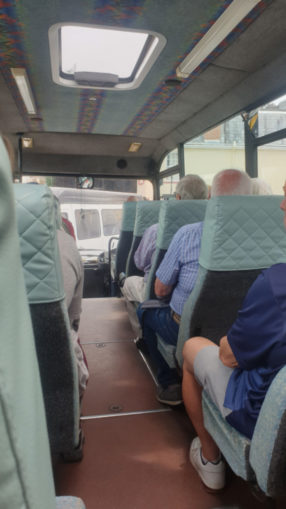
A trip to the only vineyard on the island is worth an afternoon, the ebullient guide keen to share his knowledge of the grapes, the history (it was started in the 70s) and get us to the tasting. The three wines weren’t bad – the white sold out months ago, some red and rose’ left and they also did cider and some spirits.
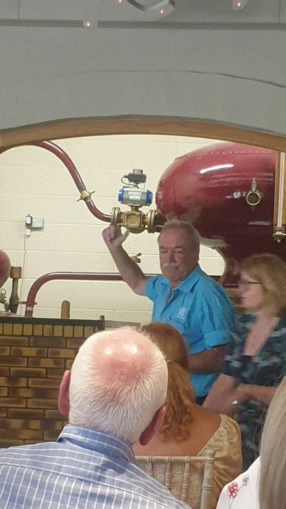
The pitch and samples seemed to work well, with quite a queue in the shop for goodies. It was based in a beautiful farm and grounds which when they took it on in the 70s was a derelict pigsty, now worth probably close to £10m. Those in the 70s never knew they had it so good!
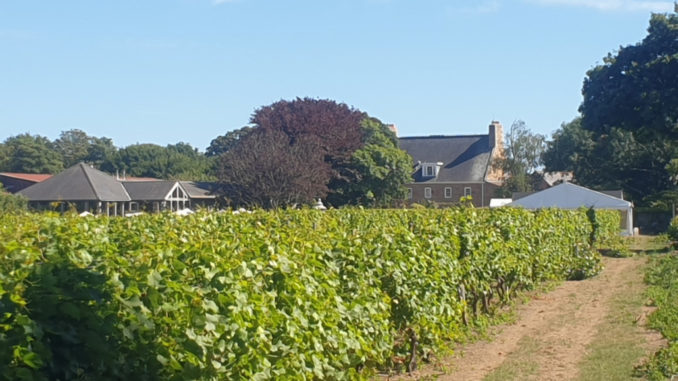
Beaches are a big part of the island’s identity, the tides being some of the biggest in the world at up to 40ft mean the tide goes out so far, that the island nearly doubles in size. The Eastern shore looking over to France is rocky and a moonscape, in other areas many bays are sandy and more appealing. Only swim as the tide comes in – with such a huge range, the outgoing currents are fearsome. The sandy beaches look inviting but are actually rock hard! perhaps it is something to do with the power of the tides compacting the sand more than on other beaches. With that, many drive and race cars on the beach, with little fear of sinking, I’d be wary of walking too far out at low tide in case of quicksand and the speed it returns.
To visit the bays and beaches, we decided to hire electric mountain bikes – the roads are so narrow and busy that hiring a car would be a very stressful experience. There are many green lanes and cycle paths that give you a much better view of the countryside. Having an electric bike meant powering up the steepest of hills without any bother – the bikes must cost around £3k – £4k each to buy, but can be hired for £45 a day (edds eco bikes). Even Mrs. SD, who is not a cyclist managed what ended up as a 29 mile tour of half the island in a day. The only complaint being aching shoulders from sitting in one position for so long. We saw valleys, beaches fields and countryside, even coming across a few fields of cannabis – they’re growing it medicinally apparently. The first part of the trip ran along the bay from St. Helier to St. Auburn – a sleepy seaside town hemmed in by the cliffs. The path is actually an old railway line (yes, they had railways after all) – which ran until the loss making railway suffered a mysterious fire that destroyed all the rolling stock in 1926. The original stations can still be seen along the bay, now running as cafes. The terminus at St. Helier now restored in Liberation Square. The railway ran on, over to the west coast, the trackbed is now a handy cycle path. We tracked up the west coast to a small bay and café for lunch at Plemont bay (the beach only accessible a mid-low tide). One notable feature at the head of the bay are a pair of puffins – around 20ft high woven of wicker they are a welcome and unusual sight.

Once lunch had gone down a little, we carried on eastwards to the Devil’s Hole (steady now), a collapsed cave that became an Edwardian tourist attraction, before returning via a cycle path to St. Helier.
Each of the parishes (there are 12 of them) has a Manor House, with medieval originals and the traditional home of the Seigneur. The house for St. Clement parish is just to the east of St. Helier. The house and grounds of Samares Manor are open to the public, with a very trend setting French café, walled garden and museum along with extensive gardens.

It is an interesting place to spend a few hours in the various gardens. The guide to the house and carriage museum was very chatty. Apparently these days whoever owns the house becomes the local Seigneur – though not with the powers of medieval times. The house was spared by the Nazis who decided that if/when they won the war it would be the residence of a senior officer/ governor for the island. All the other parish manor houses suffered a worse fate – housing troops who in the final months needed to burn the fittings for warmth.
The current Seigneur is a retired lawyer and his wife who spend their days pottering around the gardens. Good luck to him, it doesn’t seem a bad way to spend the day.
Over the seven days we’ve seen pretty much everything to offer, I’d not want to spend much more time on the island, probably taking a fast ferry to St Malo or Alderney/Sark/Guernsey for more of the same. It was a lovely trip, they have great weather, it is very different to the mainland with all the French names, the different customs and wonderful history. To someone from Northumberland, it does seem busy – too many cars on small roads.
Mrs. SD loved it – only regretting not having visited before now, and after our first holiday without kids in 23 years, we’re still speaking!
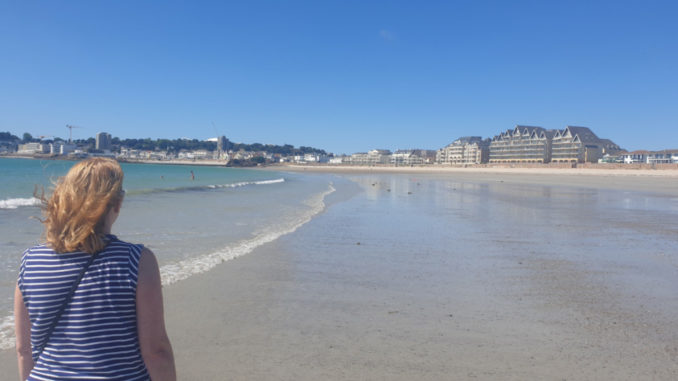
MEB visited the island a week or two after we did, it’d be interesting to get her take on it.
© Sweaty Dave 2022
The Goodnight Vienna Audio file



